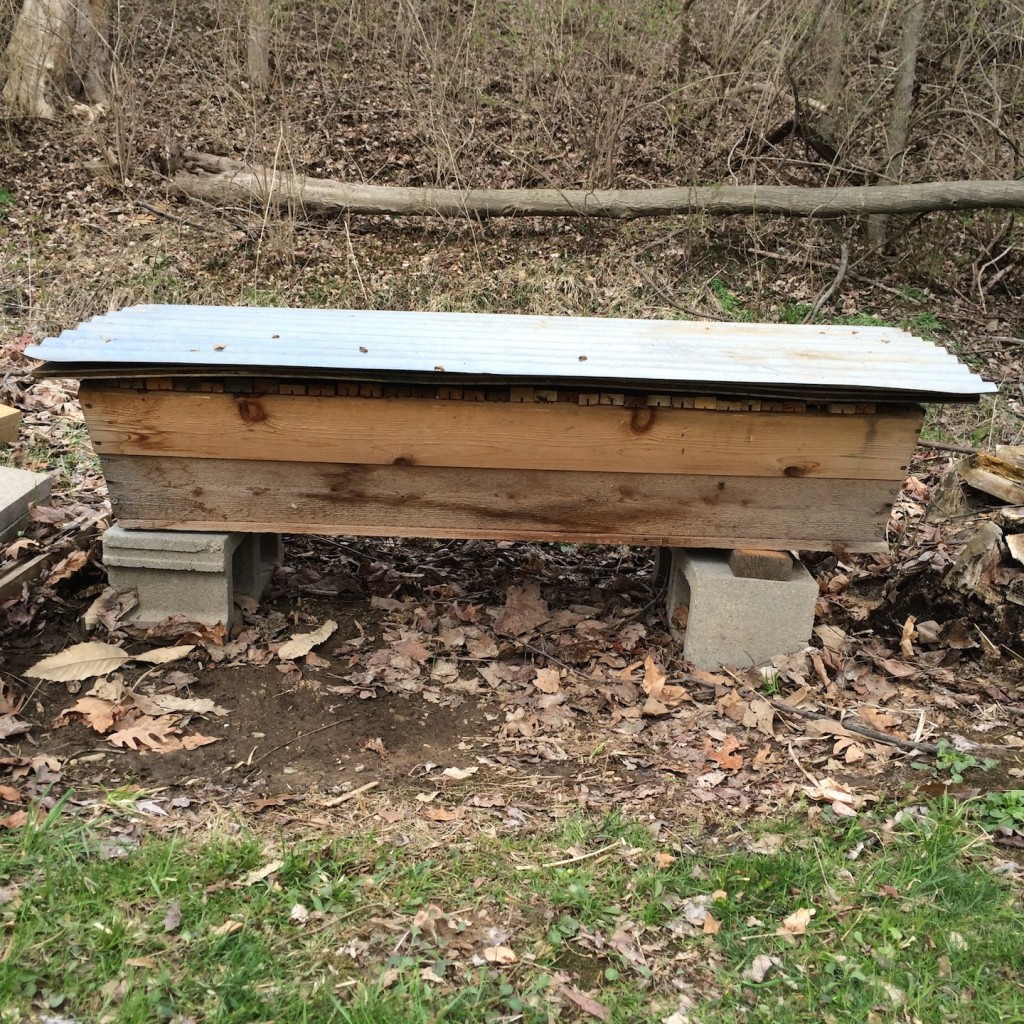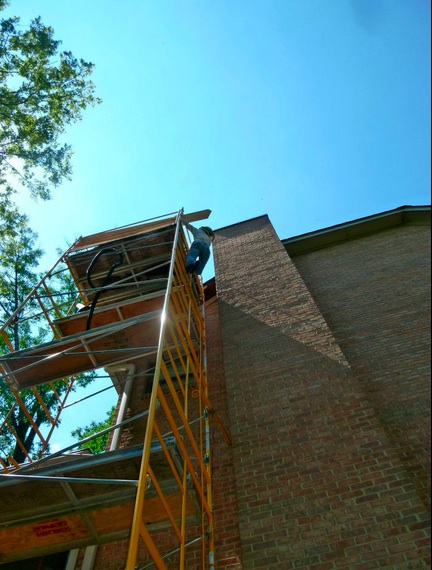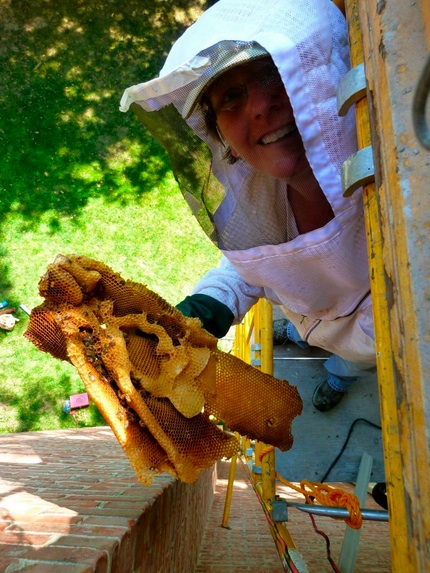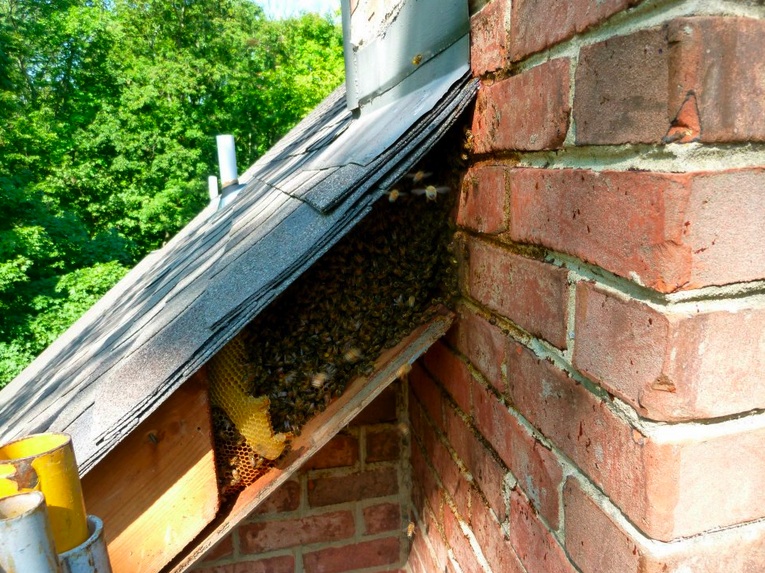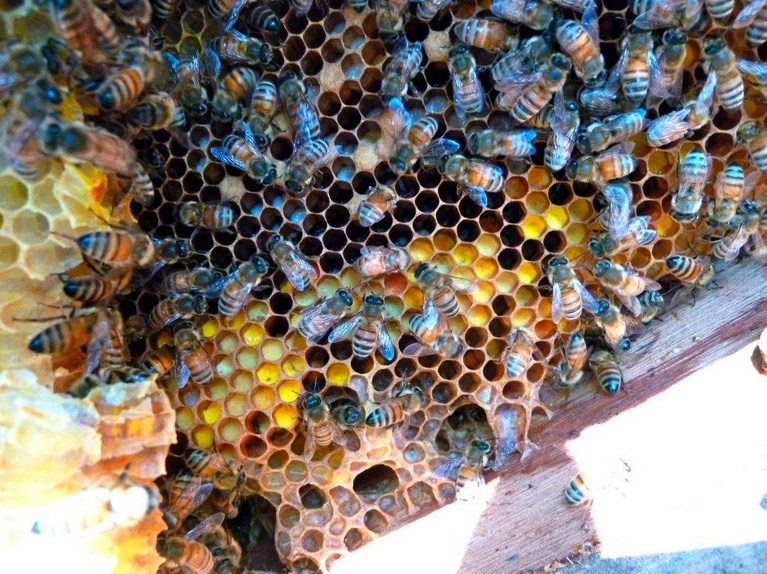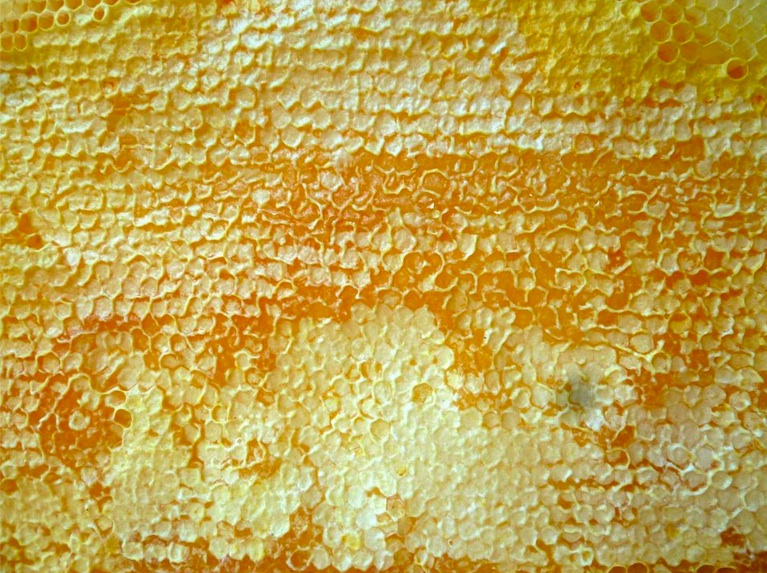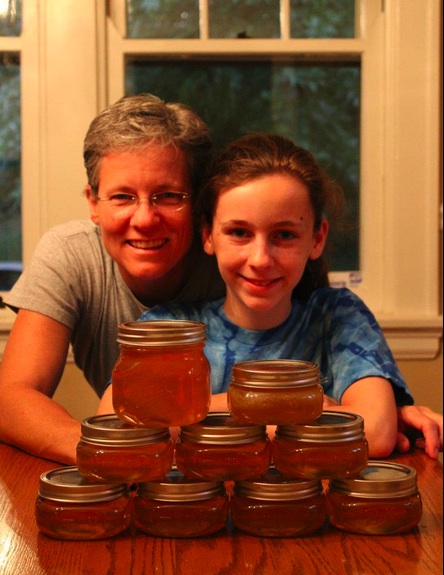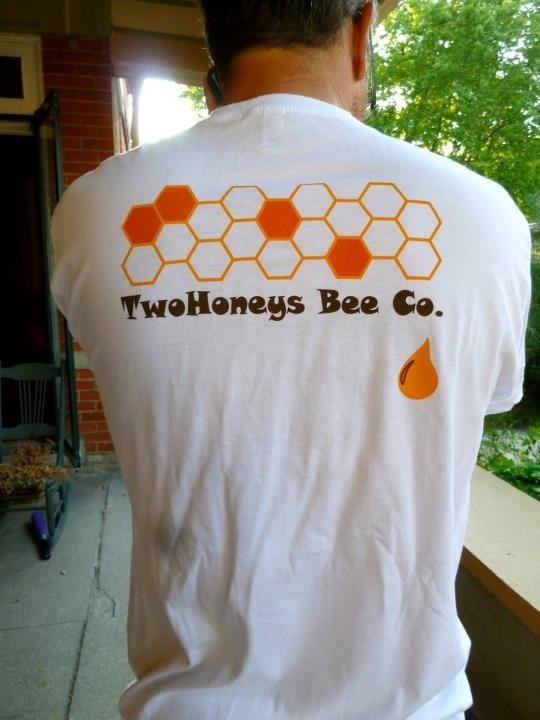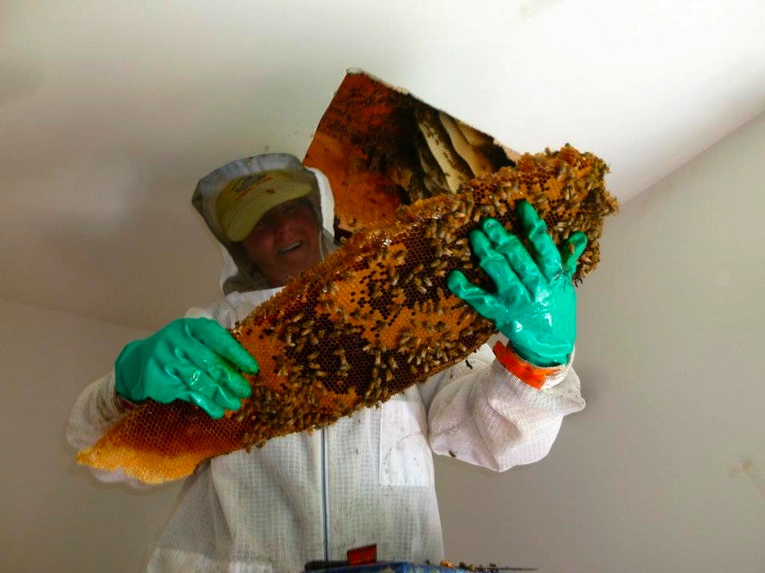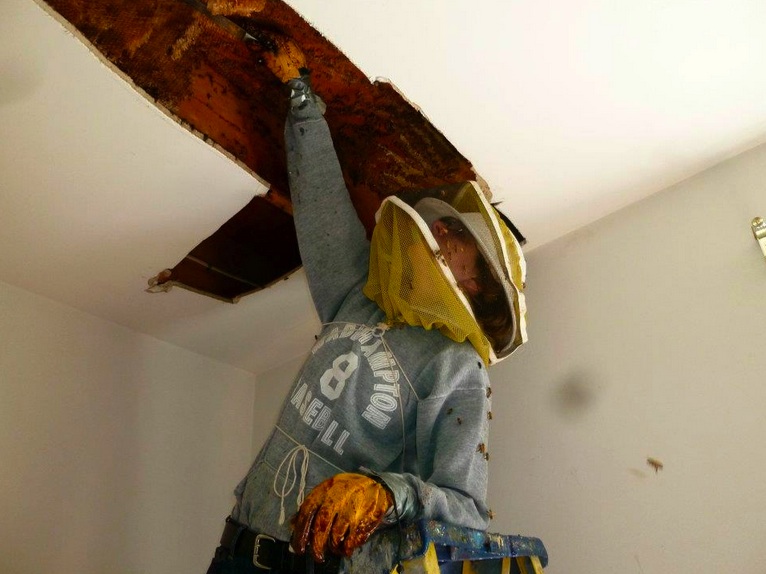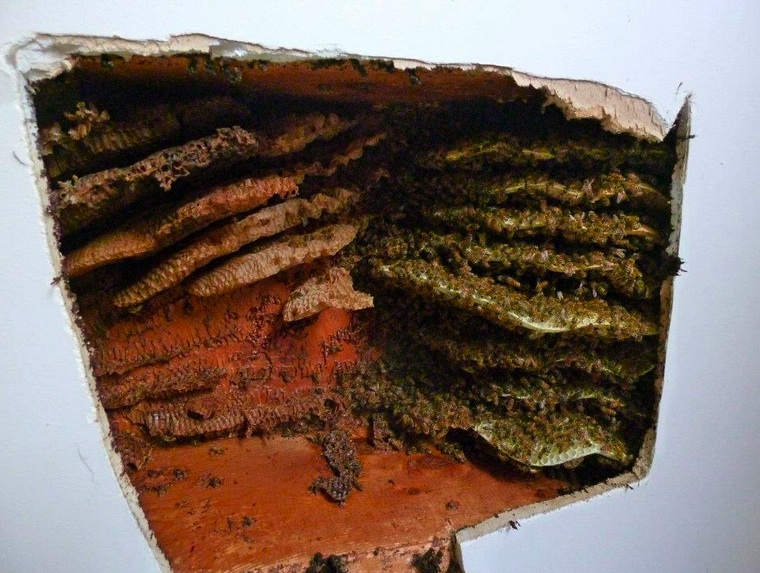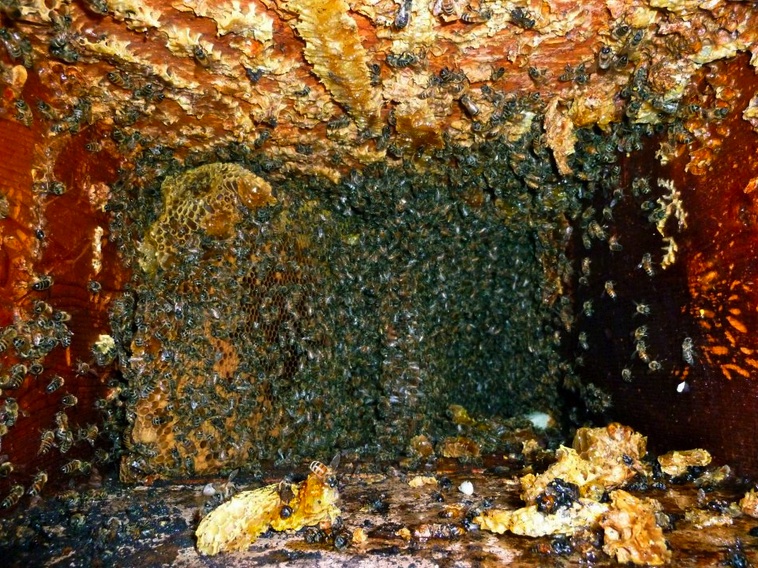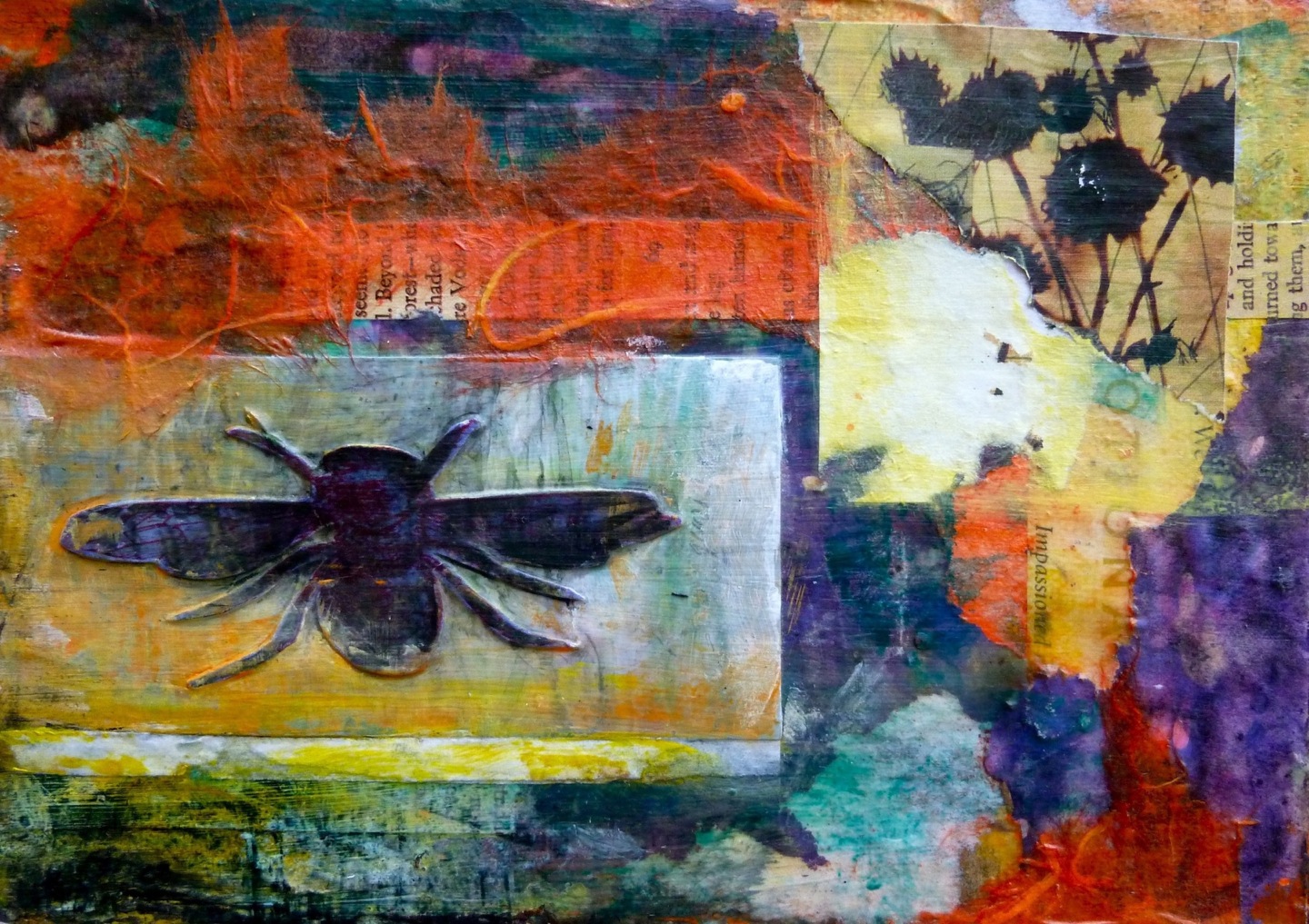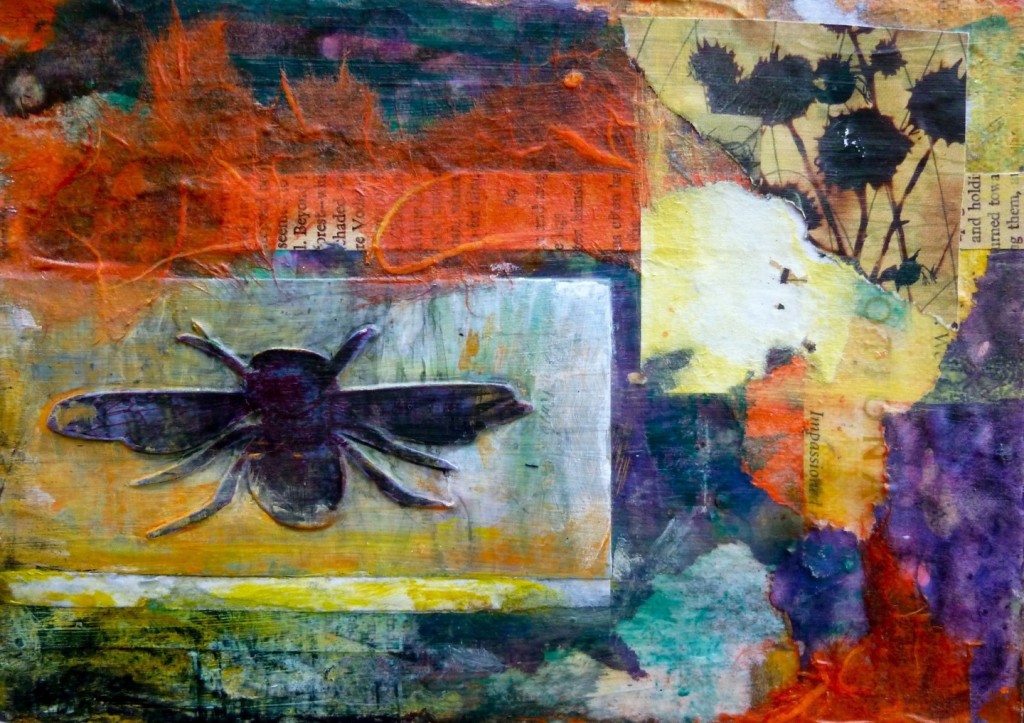It was a beautiful day for a bee removal, Reader. And because it’s been an long and vicious winter since our last one, I thought it might perk you up to see our happy team at work together on a roof.
Two years ago, the homeowners who hired us watched as a swarm of honeybees moved into their roof through this gap. But because the hive is on the second floor, the bees weren’t a problem until the homeowners built a two-tiered deck. Now the family wants to utilize their second-story deck, and the bees make it difficult for them to relax there.
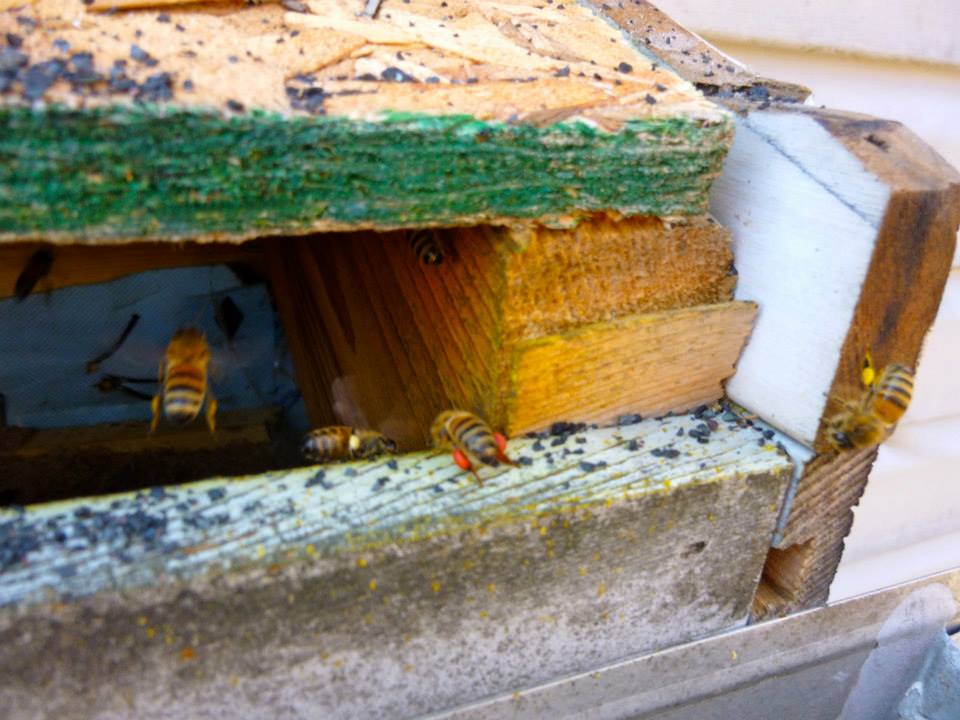
Terry Evans—who works for Jerry Hof, our brilliant contractor—removed the shingles, the siding, and the chipboard in order to access the hive. Terry worked methodically and thoughtfully to expose the hive without destroying the existing structure. His careful work paid off once the bees were gone and it was time to replace all the parts…the reconstruction took much less time than the deconstruction, and now the space looks as if neither we nor the bees were ever there.

We flipped the chipboard with much of the empty comb still attached. The comb heavy with honey and brood and bees, however, collapsed into the soft insulation.
You know, Reader, I have to tell you how much I love working with Nicola Mason. She will scamper onto a roof or shinny up the scaffolding. She will dig her arms deep into dark and mysterious bee- and honey-filled cavities. And she does it with such glee and energy that she fills me with glee and energy, too. She is a giver of enthusiasm.
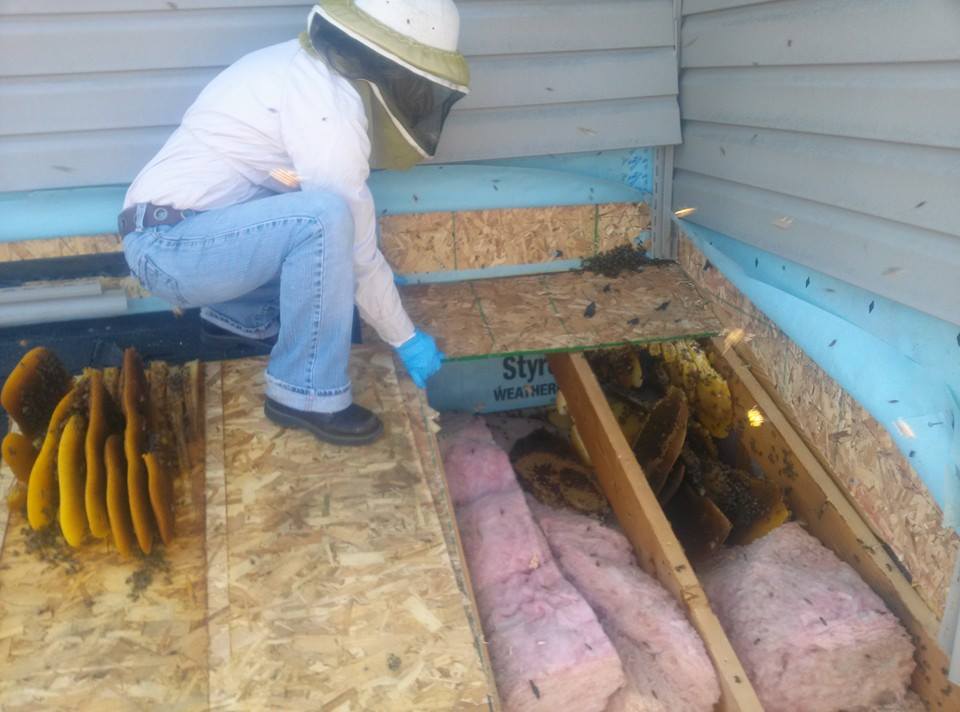
Once we’ve exposed the hive and accessed the comb and bees, we begin removing one comb at a time. We determine where each comb should go in its new hive…and we also always always keep a sharp eye out for the queen.
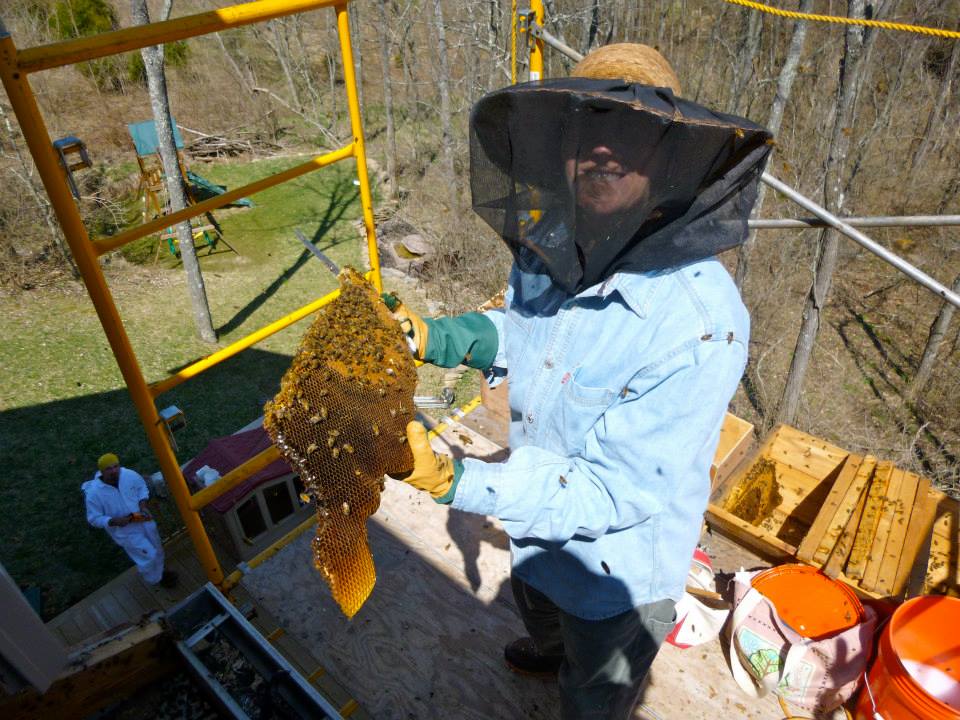
It’s not easy to spot the queen in the chaos of a bee removal, Reader, but we’ve become rather adept at it. On this job, Nicola took responsibility for cutting and removing the bee-laden comb from its original location. After a while, she quietly and matter-of-factly said simply, “I see her.” Then she calmly removed her queen clip from the pocket of her shirt and collected the queen in it.
Capturing the queen guarantees the removal’s success because all the other bees will follow the queen’s pheromones…there is no more chaos or indecision. Wherever she goes, they go.
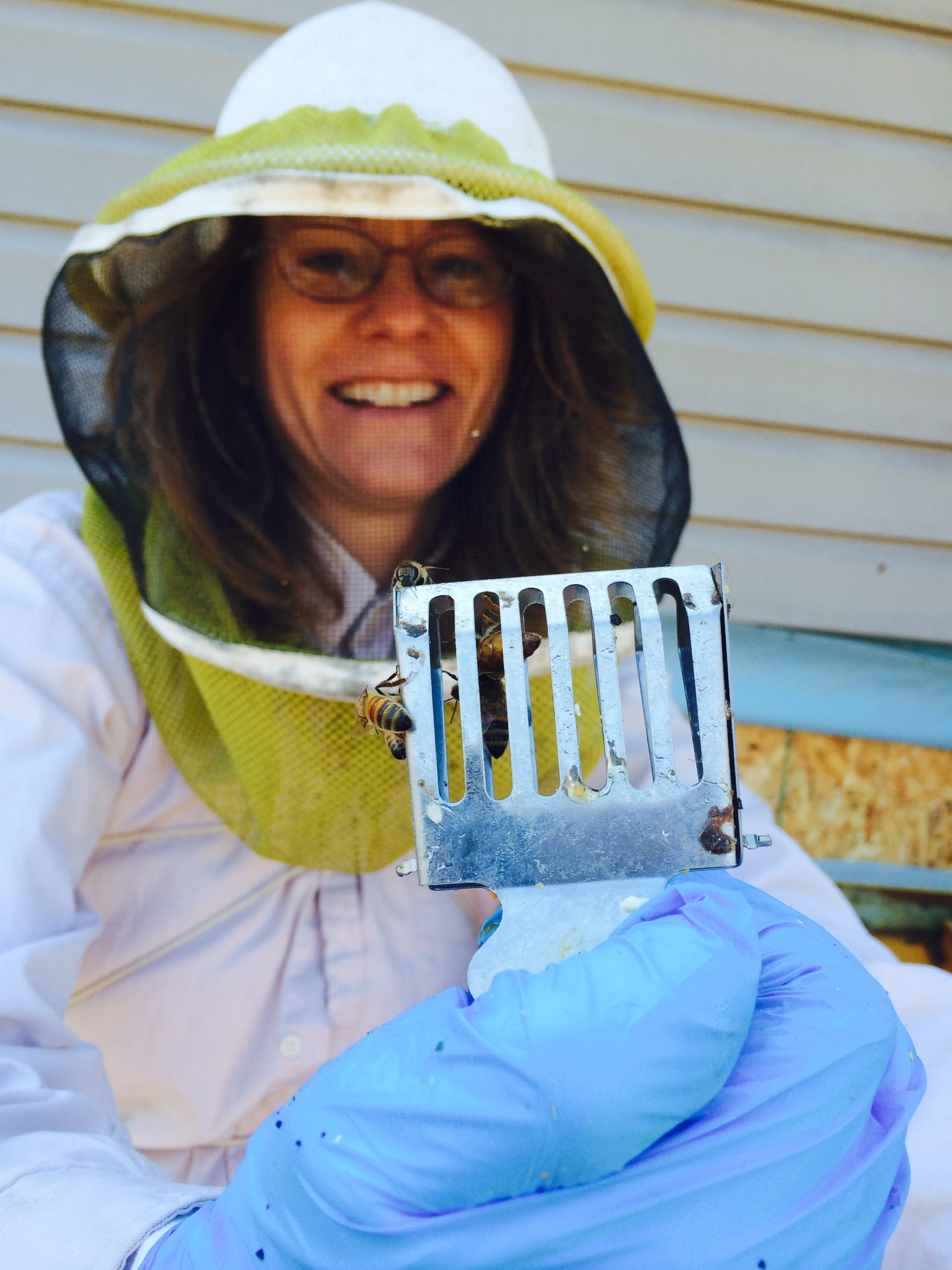
We catch the queen in this clip (which keeps her from flying away) and then attache the clip to a bar with rubber bands. This way, the worker bees will go into the hive where we place the queen.
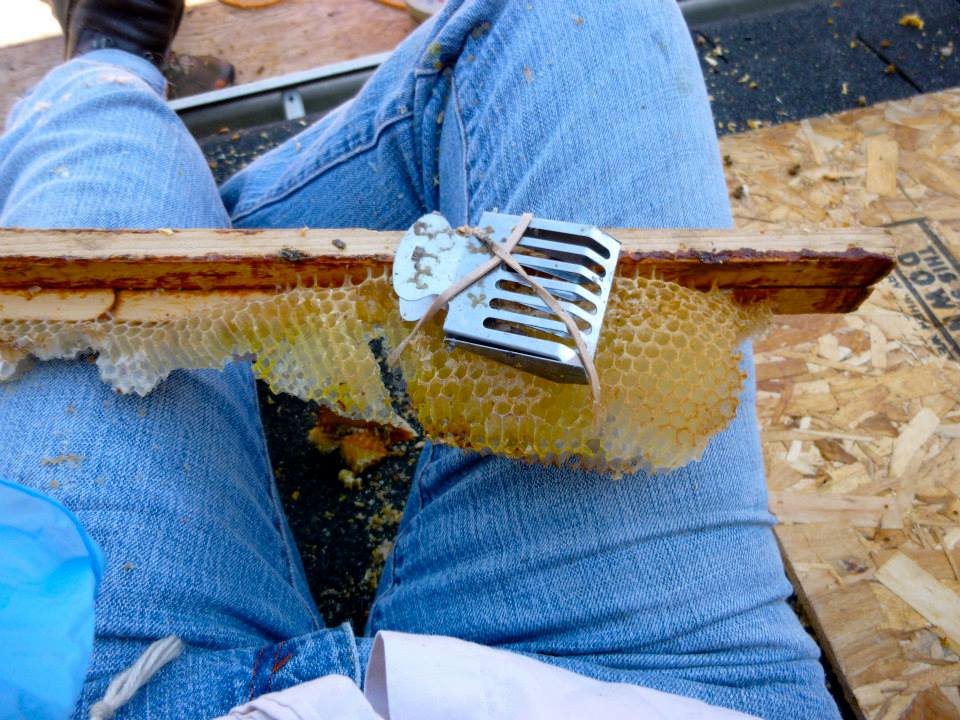
You know, sometimes you simply have to stop and look around and wonder how you got to be so lucky—lucky to be high up on scaffolding on a beautiful day with nice people and a hive of honeybees. Especially after you’ve got the queen, and all is well.
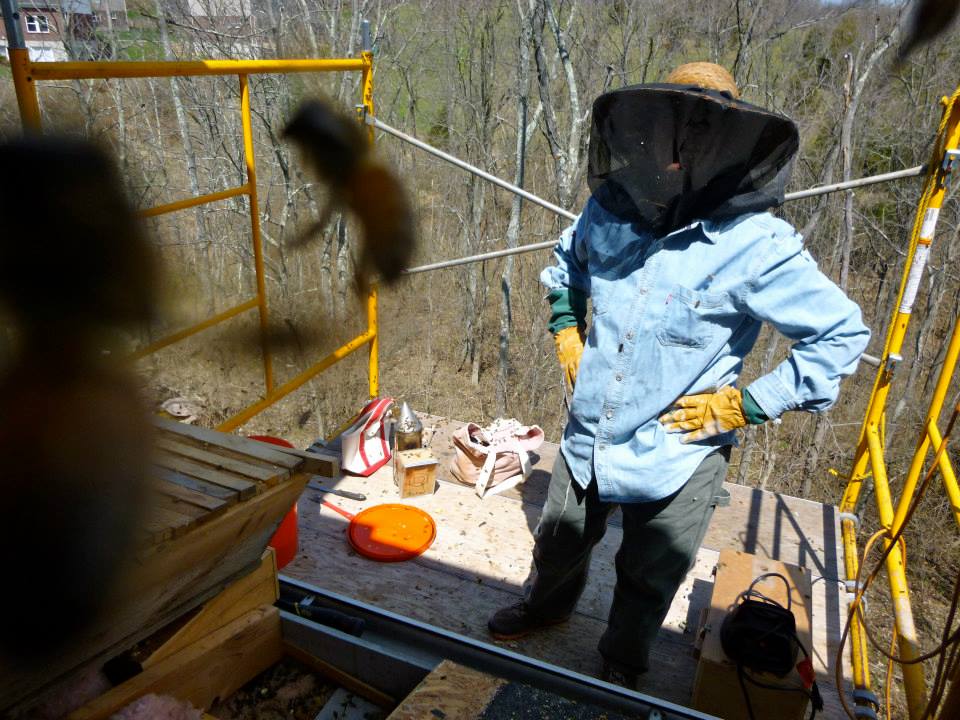
Some bees are reluctant to go into the box…once the queen’s in there, they’ll eventually find their way to her, but we can’t always just sit around and wait for that to happen. Which is why it’s good to have a bee vac on hand. We vacuumed the reluctant bees and reunited them with their sisters when they reached their permanent home.
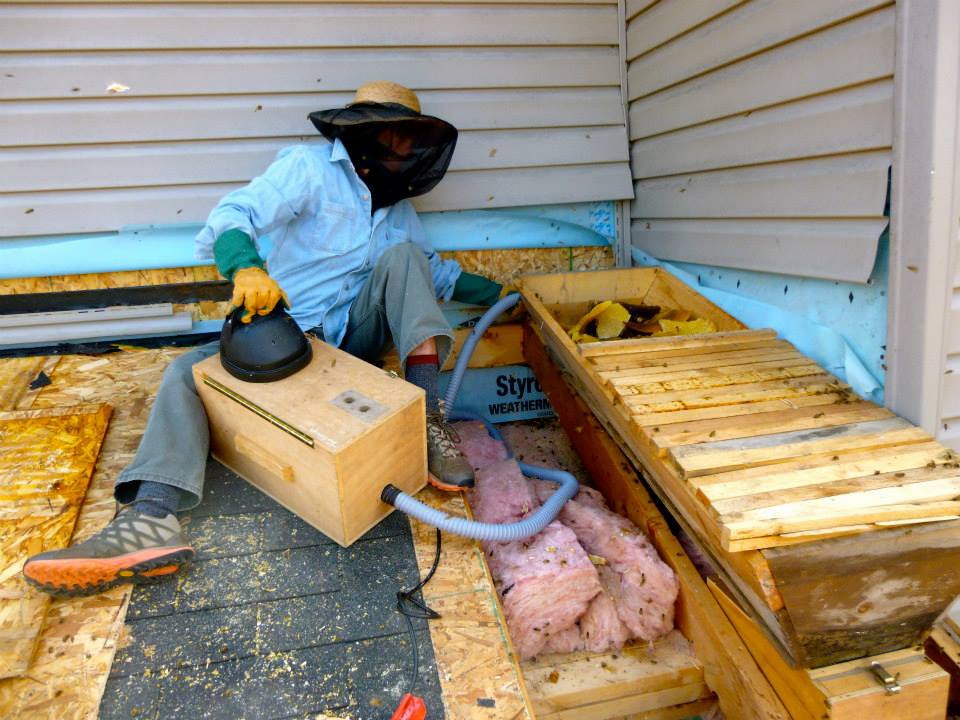
Once we vacuumed the stragglers and sprayed the area with bee repellant, we closed the hive and lowered it to the ground for transport to its permanent home.

And after a nice drive in the bed of a gorgeous pickup truck, the Alexandria hive reached her permanent home. The bees are now busy exploring their new neighborhood.
